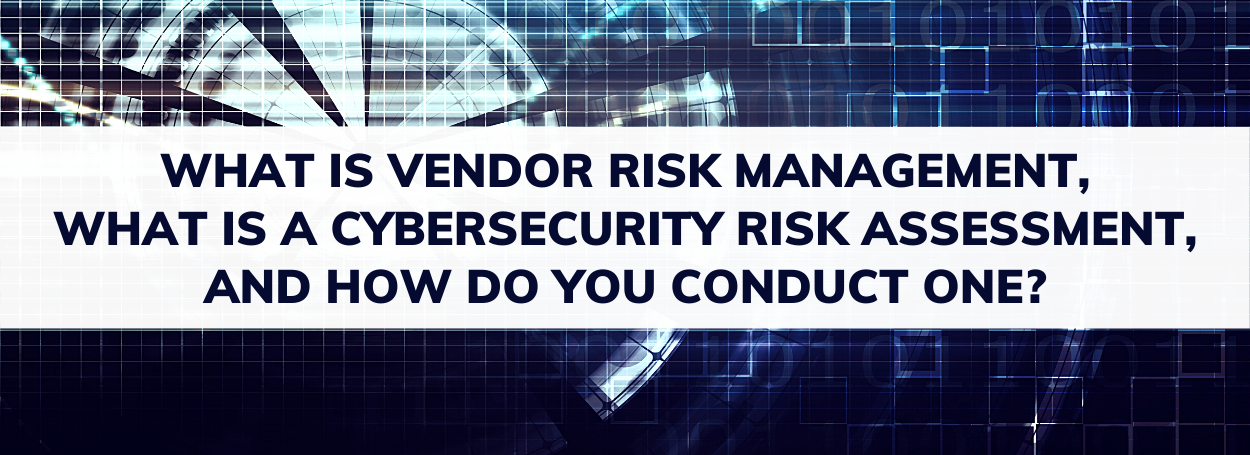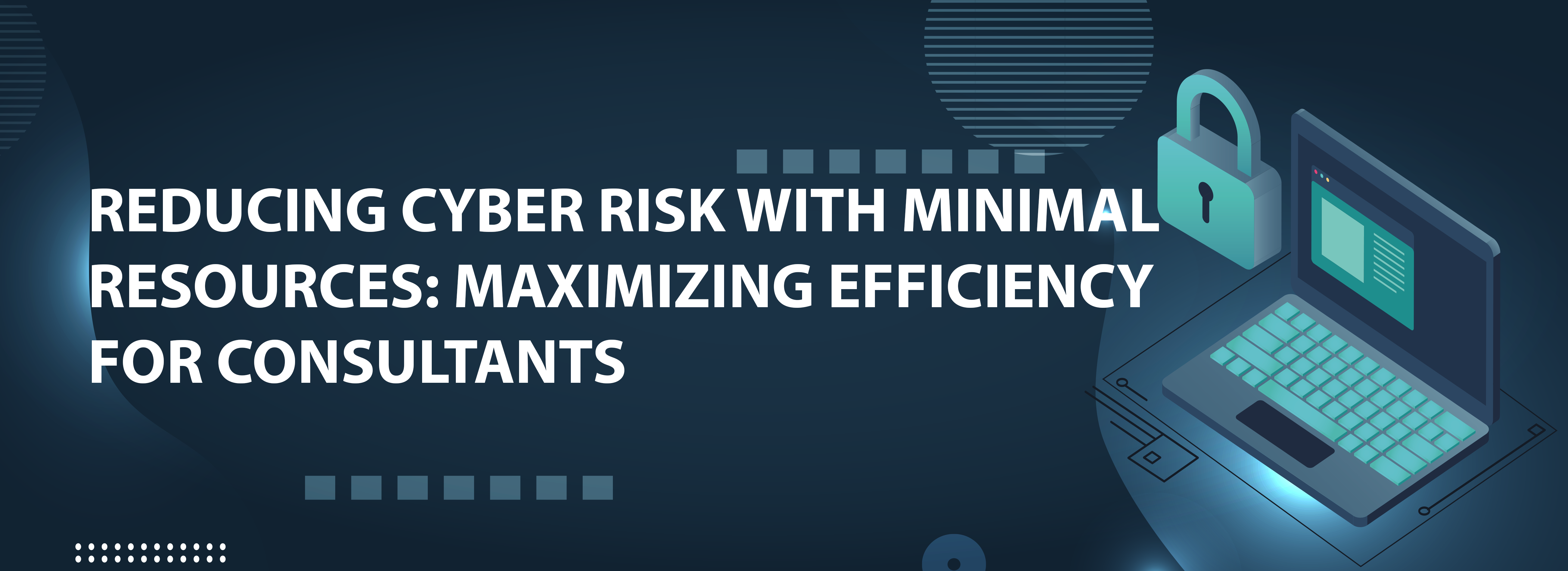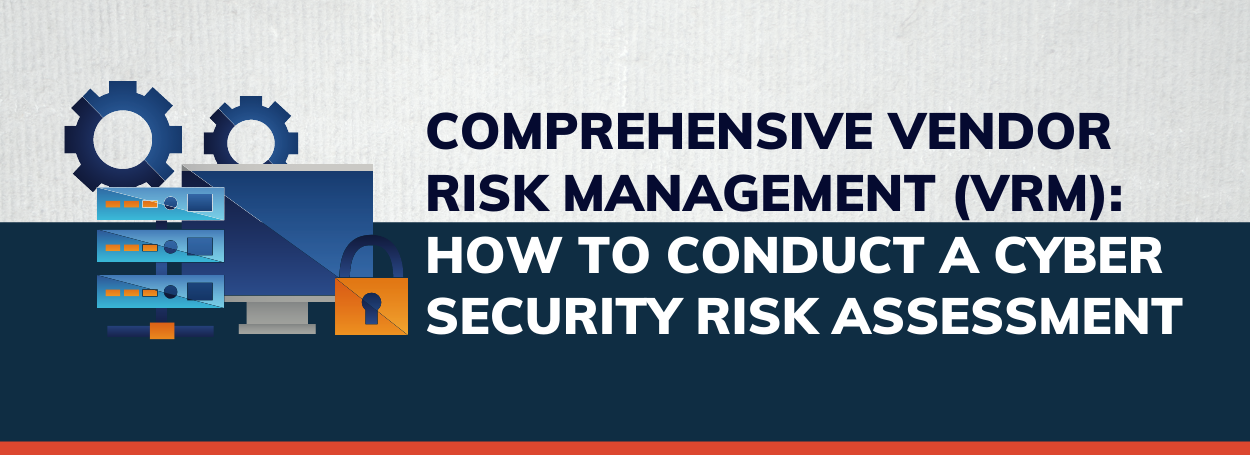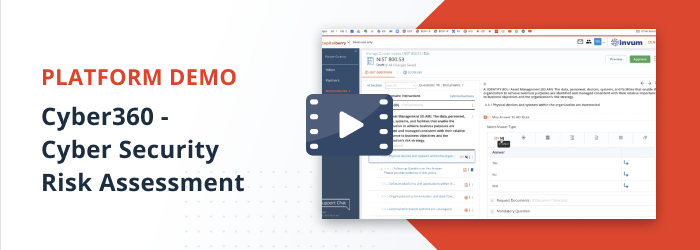What is Vendor Risk Management, what is a cybersecurity risk assessment, and how do you conduct one?

When a lot of business people encounter the term cybersecurity, they think “Do I really need that? I don’t have anything worth stealing?” or “The security I have now works fine.” These opinions are usually not backed by accurate data but are instead built on their previous experiences. Just because you haven’t experienced cyber attacks before, doesn’t mean it can’t happen.
And as a business interacts with more vendors and makes its products and services an integral part of business operations, the risks are heightened. So as a cautious decision maker, it is important to stay on top of any risks posed by the software your vendor supplies. You can do this by conducting a cybersecurity risk assessment throughout your organization.
But first, let’s get a better understanding of vendor risk management as a whole and how cybersecurity fits in all this:
What is vendor risk management?
Vendor risk management is all about ensuring that any potential risks associated with using a vendor’s products or services do not turn into the actual disruption of business operations. This process is usually preceded by risk assessment, which involves the identification of any risks posed by a vendor’s products or services, while also comparing them to the advantages of partnering with a said vendor.
It is important to establish the particular type of risk associated with a vendor and consider your business’ priorities when serving customers. For example, if you’re a fin-tech company that processes payments, it is vital to keep customers’ bank details and other sensitive information safe. Therefore, in such a case, you need to evaluate every aspect of a software vendor or I.T. service provider’s service.
This is because while you may intend to protect yourself against a primary threat like data theft, there’s a chance your business can be affected by other cybersecurity-related areas. Maybe you outsource some cloud hosting services and some downtime on their end could cost you money as customers opt for another payments provider for their transactions.
Such evaluations can be carried out in a process known as a cybersecurity risk assessment.
What is cybersecurity risk assessment?
This is the process of discovering, analyzing and evaluating any risks involved with using information systems for day-to-day operations. The result of this process is supposed to serve as guidance on what areas to focus on when instituting cybersecurity measures.
It could save you from spending a lot on protecting against events that would barely happen or underestimating the implications of having certain risks exploited. A cybersecurity risk assessment could also help you put in place safety measures that leave you fully compliant with the relevant industry standards.
How to conduct a cybersecurity risk assessment
The starting point for this process involves an audit of sorts to determine the data and infrastructure you’re trying to protect, along with their value. You’ll have to find out the data you collect, how and where you store it, the current protections you have in place for it, how long you keep it, who can access it internally or externally etc.
Another crucial step in these risk assessments in determining the purpose of the assessment. This includes establishing the scope of what will be covered, the priorities, along with limitations that could skew your results, the person to contact for particular information, and the risk model being used for analysis. Let’s break down some of the steps involved in risk assessment:
Characterize Every Element
Here, you’re basically picking a system component, process, application, etc. and properly categorizing it in order to get an idea of the potential threats that arise from using this element. It involves basic actions like finding out the name and function of a device or application, what type of data it uses and who is the vendor.
You will also have to find out the internal and external interfaces that people may be using to interact with this element, who these people are and the map of how the data they use moves.
Prioritize Assets And Pinpoint Threats
Sit down with members of management and other users to determine the most important assets within your information systems. While there may be several points of attack, you need to know what components users consider vital to their operations.
After this, you can then write down the threats associated with using these components. Some may be common to many organizations while others may be unique to yours. Some common ones include unauthorized access, data loss, service disruption from downtime, misuse of information and permissions, etc.
There are also other threats that may not come from a malicious actor like natural disasters, human error, and system failure. DO not forget adversarial threats from trusted insiders, nation-states, ad hoc groups, and hacker collectives, corporate espionage, etc.
Evaluate The Impact
Once you know the major threat areas, the next question to ask yourself is “how much do I stand to lose if that particular catastrophic event actually happens?” This starts with identifying a specific vulnerability, the exact loophole within the software for instance, that a malicious actor can exploit.
The impact associated with any threat can be graded as low, medium or high. This will help you determine how much resources to dedicate to a particular system component, how quickly to get it secured and how frequently to revisit and refine the solution put in place.
Analyze And Revise Your Controls
Put simply, this step is all about finding out the controls you have in place, comparing them to the vulnerabilities and seeing how much of a gap there is between the two. The result is a clearer idea of what extra controls you need to install.
Controls come in many types such as user provisioning, administration, organizational risk management, user authentication, infrastructure data protection, continuity of operations, and data center and physical environmental security.
You need to find out which of these controls has a clear relationship with the threat you’re trying to neutralize. For example, user authentication may be a useful tool in controlling access to specific data. Controls can also be described as satisfactory, satisfactory with recommendations, needs improvement or inadequate.
Estimate The Likelihood Of An Incident
The likelihood of a particular cyber attack or incident enables you to further determine how much to spend on preventing it. For example, if a certain event can cost you 10 million in losses but is likely to happen no more than once in 10 years, you may deduce that it can cost you one million every year.
The likelihood rating can also be displayed as high, medium or low depending on the level of motivation of the actor, the capability within them as a person and also their tools, and the effectiveness of the controls currently in place.
Compute Your Risk Rating
There are a number of factors that influence these calculations but ultimately, your risk rating is equivalent to the impact of a breach multiplied by its likelihood of happening. Always compare the immediate cost of prevention to the value of the information or hardware you are trying to protect.
This comparison will help you determine what to take care of first.
All-in-all, you’ll have to find that perfect middle-ground between what your cybersecurity risk assessment says, and what is practical and affordable within your organization.


